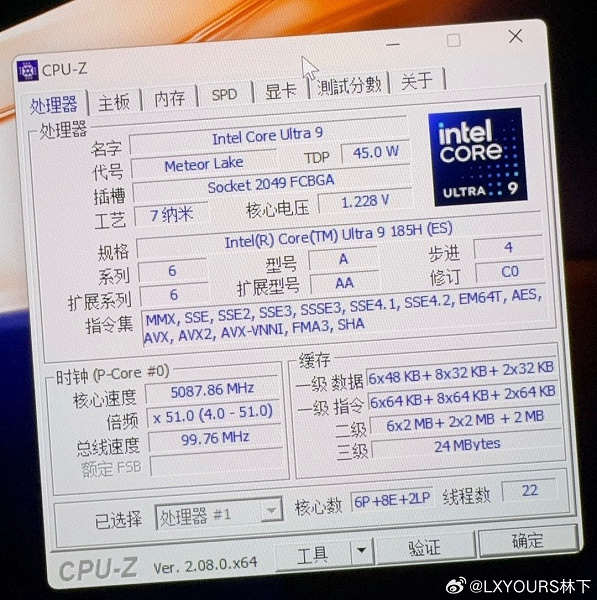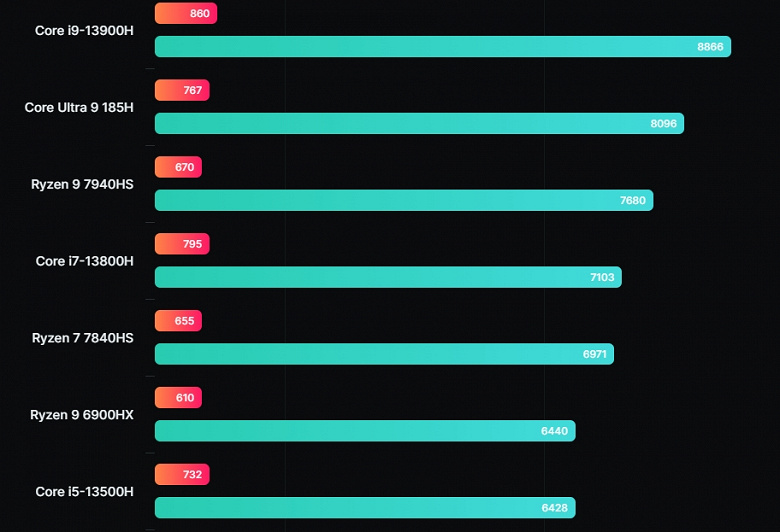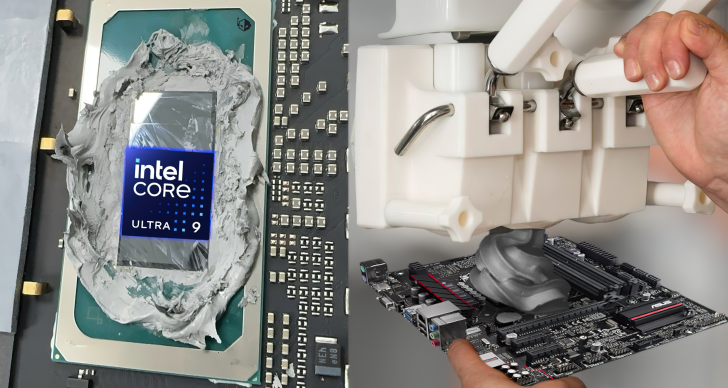In single-threaded mode, the new product lost even to the Core i7-13800H
Yesterday we took a look at the first tests of the Core Ultra 7 155H, which at first glance are not impressive. Today the first test results of the flagship Core Ultra 9 185H appeared on the Internet.
This CPU has the maximum number of cores for Meteor Lake: six large, eight small and two small in the SoC. The CPU operates at frequencies up to 5.1 GHz. Now there is a result only in CPU-Z: 767 and 8097 points in single-threaded and multi-threaded modes, respectively.

In this case, we are interested in both, since the single-threaded mode shows the advantages of the new architecture, and Meteor Lake has both large and small cores with the new architecture.
As you can see, in single-threaded mode the new product is faster than the Core i5-13500H, but slower than the Core i7-13800H. That is, no advantage in single-threaded performance from switching to a new architecture is visible, but this is if we ignore the issue of power consumption. Formally, the TDP of the Core Ultra 9 185H and Core i7-13800H is the same and is 45 W. If the actual consumption is also approximately equal, then it turns out that, indeed, there is no performance gain from the transition to new architectures.

If we talk about multi-threaded mode, here, interestingly, the situation is a little better, but not that radically. Yes, the Core Ultra 9 185H is already ahead of the Core i7-13800H, and noticeably ahead (by 15%), but the Core i9-13900H is already ahead of the new product by about 10%. And at the same time, all these three CPUs have the same number of large and small cores, except for the small cores in the Meteor Lake SoC. And if you count them, then the new product has even more cores.
Thus, if we summarize yesterday’s data with today’s, it turns out that we shouldn’t expect any tangible performance gain from switching from Raptor Lake to Meteor Lake when comparing CPUs with similar configurations. At the same time, Meteor Lake has a much more powerful iGPU and is likely still noticeably lower power consumption, although yesterday's tests showed that the Ryzen 7040 is even better in this regard thanks to the much more modern 4 nm process technology.

